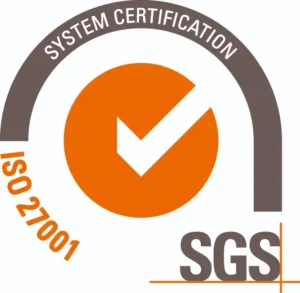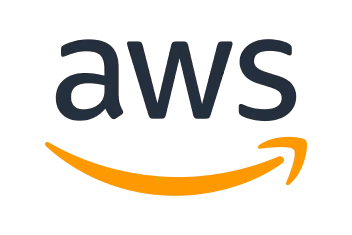Introduction: Navigating the Risks in Global Business Relationships
As cross-border partnerships become the norm, businesses are increasingly working with entities in complex and high-risk jurisdictions. Whether it’s due to political instability, weak regulatory oversight, or high corruption indices, these regions pose significant challenges for compliance teams.
That’s where robust KYB (Know Your Business) processes come into play.
While KYB is a standard requirement under most global anti-money laundering (AML) laws, conducting KYB in high-risk jurisdictions requires enhanced due diligence, risk-based analysis, and access to reliable KYB services.
This article breaks down how to conduct effective KYB checks in high-risk areas and what tools and practices can help mitigate exposure while maintaining global growth.
What is KYB and Why Does It Matter
KYB (Know Your Business) is the process of verifying the legitimacy, ownership structure, and risk profile of a corporate entity before engaging in business with them. It typically involves:
- Verifying business registration and incorporation documents
- Identifying and verifying Ultimate Beneficial Owners (UBOs)
- Screening against sanctions, watchlists, and adverse media
- Assessing the operational status and business purpose
- Ongoing monitoring for changes or red flags
Effective KYB services help businesses reduce risk, comply with AML regulations, and avoid inadvertently partnering with bad actors.
What Makes a Jurisdiction High Risk?
A high-risk jurisdiction may have:
- High levels of corruption or political exposure
- Weak AML or CTF controls
- High incidence of shell companies or tax evasion
- Limited public access to corporate records
- Sanctions imposed by international regulators (e.g., OFAC, FATF, EU)
The FATF (Financial Action Task Force) maintains a list of jurisdictions under increased monitoring, which compliance teams should review regularly.
Step-by-Step KYB Process in High-Risk Jurisdictions
1. Enhanced Business Verification
Instead of basic company registry checks, use KYB services that access local databases and verify incorporation documents, operational licenses, and tax records. In jurisdictions with limited transparency, additional verification via legal counsel or local partners may be necessary.
2. Deep UBO Identification
High-risk jurisdictions often obscure UBOs through layers of ownership. Use tools that can:
- Map complex ownership chains
- Detect nominee shareholders
- Highlight discrepancies across jurisdictions
- Flag entities owned or controlled by sanctioned individuals
Many KYB know your business platforms now include UBO discovery as a built-in feature using AI-driven corporate structure analysis.
3. PEP & Sanctions Screening
Screen the business and its owners against:
- Global PEP (Politically Exposed Person) databases
- Sanctions lists (e.g., UN, OFAC, EU, HMT)
- Adverse media coverage and criminal watchlists
A strong KYB platform will offer real-time screening with ongoing monitoring to flag new risks.
4. Risk-Based Scoring
Assign a risk score to each entity based on:
- Country risk (using FATF or Transparency International indexes)
- Industry risk (e.g., weapons, crypto, gambling)
- Sanctions proximity (e.g., known associates)
- Ownership red flags (e.g., bearer shares, complex trusts)
This allows compliance teams to tailor due diligence based on the assessed risk level.
5. Ongoing Monitoring & Reassessment
KYB is not a one-time event. High-risk jurisdictions are prone to sudden changes. Choose KYB services that offer:
- Real-time monitoring
- Alerts on UBO changes or legal disputes
- Periodic refresh of business data
- Integration with internal compliance workflows
Learn how smart KYB verification tools streamline global risk management here.
Challenges You May Face (And How to Overcome Them)
| Challenge | Solution |
| Lack of local registries | Partner with local compliance consultants or legal experts |
| Language barriers | Use platforms offering multilingual document analysis |
| Obscured ownership | Employ AI-driven UBO mapping tools |
| Data protection limitations | Work with GDPR- and FATF-compliant KYB providers |
Best Practices for High-Risk KYB
- Document Everything: Keep a clear audit trail of all due diligence steps.
- Stay Updated: Monitor changes in FATF country ratings and sanctions updates.
- Train Your Team: Ensure internal teams understand the signs of corporate obfuscation.
- Use Tiered KYB Tools: Adapt your checks based on transaction volume, industry, and jurisdiction.
- Conduct Site Visits (If Possible): Especially for high-value or high-risk partnerships.
Conclusion: High Risk Doesn’t Have to Mean High Exposure
Conducting KYB (Know-Your-Business) checks in high-risk jurisdictions isn’t just about ticking compliance boxes; it’s about protecting your company from reputational, legal, and financial fallout.
With the right KYB services, enhanced tools, and a risk-based mindset, businesses can safely expand into new markets while staying compliant and informed.
FAQs
In regulated industries like finance, payments, crypto, and real estate—yes. Even outside of these, KYB is increasingly seen as a business best practice.
At least annually, or more frequently for high-risk entities. Continuous monitoring solutions make this easier.
This may indicate a red flag. You can request legal attestation or conduct enhanced due diligence through a third-party investigation.









